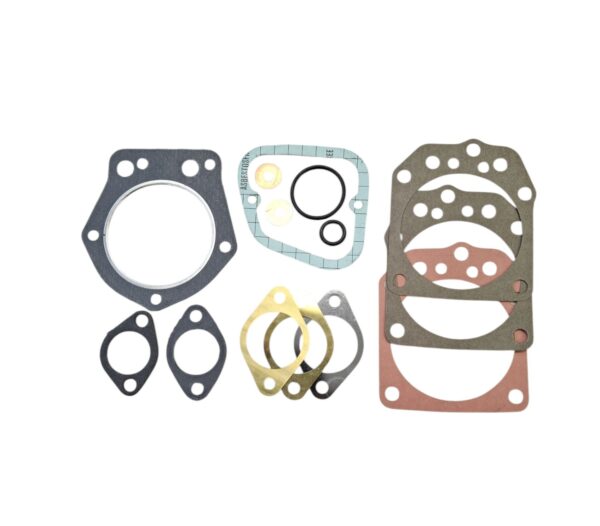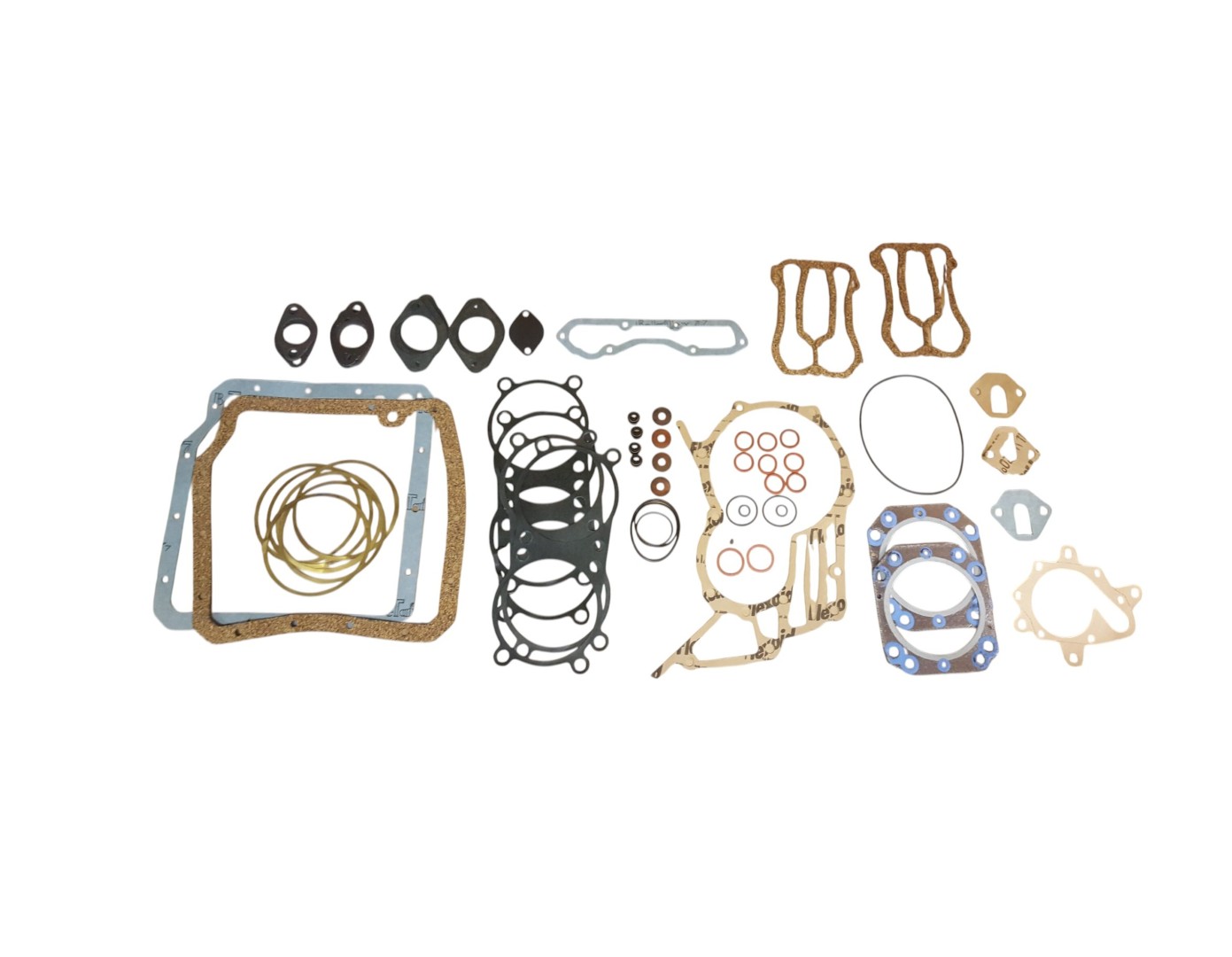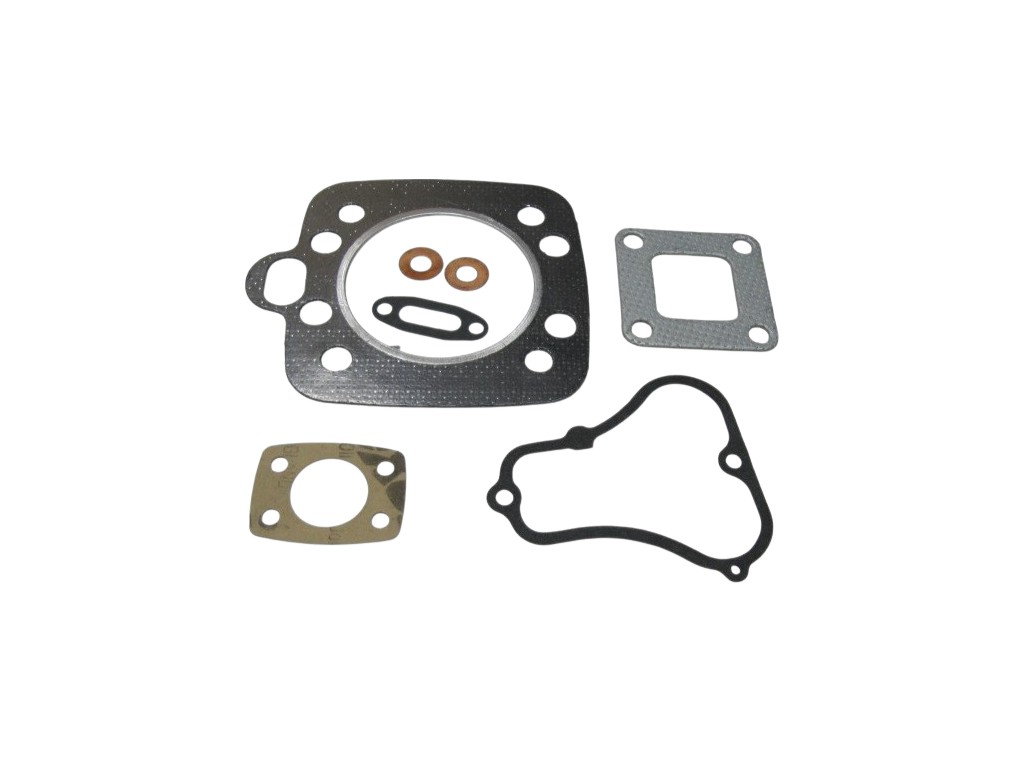
A blown head gasket is always a pain. You might be enjoying a nice boat trip and suddenly see white smoke puffing out of the exhaust. It could also be that your coolant level is dropping faster than usual or getting mixed with your engine oil. Sometimes, you’ll also notice the engine overheating or losing power. In all these situations, a blown head gasket could be the culprit.
We’ll explain why a head gasket is so important, how to spot problems and what you can do about them. We’ll also explain what you can do to prevent head gasket issues in the future.
Why are head gaskets so important?
At first glance, a head gasket might not seem like much: a thin metal plate with openings for cylinders, oil, and coolant channels. But without a good head gasket, no engine will run properly. So, it’s more important than you might initially think.
The cylinder head gasket is a seal between the engine block and the cylinder head. It prevents gases from the combustion chamber from escaping and ensures that coolant and oil passages between the two parts do not leak. It is therefore a crucial part of your boat engine.
How to spot a blown head gasket on a boat?
When the seal is no longer doing its job properly, gases, liquids, and oil can come into contact with each other. You’ll notice this as a change in how the engine performs. We’ve listed five possible signs of a faulty head gasket.
White smoke from the exhaust
If the head gasket is leaking and coolant is entering the cylinders, the coolant will burn along with the fuel. This often results in white smoke coming from the exhaust. So, if you see white smoke coming from your exhaust, your head gasket might be leaking.
Coolant loss
You’re having to top up the coolant more often than usual, and you can’t see any signs of a leak? Well then, it’s highly probable that the coolant is escaping through a blown head gasket and ending up in the combustion chamber.
Oil pollution
A blown head gasket often results in oil and coolant mixing. This can cause the engine oil to turn into a creamy substance. Some people liken it to mayonnaise.
Engine overheating
If there’s a faulty head gasket, air or exhaust gases can also get into the radiator or heat exchanger. This prevents the engine from cooling properly, leading to high engine temperatures.
Loss of power
Because gases can sometimes escape from the cylinders with a blown head gasket, the engine can also lose power. The engine might also run rough or struggle to accelerate.

Causes of a blown head gasket on a boat
A head gasket doesn’t just fail out of the blue. Usually, it’s a combination of factors at play. We’ve listed three potential causes for a blown head gasket.
Engine overheating
Overheating can be both a consequence and a cause of a blown head gasket. We’d go so far as to say it’s the number one cause. When the engine gets too hot, the metal expands under high pressure, which affects the seal.
The wear and tear of the years
With every part of your boat engine, there’s eventually wear and tear. After many years of faithful service, with fluctuations in pressure and temperature, a head gasket can eventually give up the ghost. The gasket is simply knackered.
Incorrect assembly or gasket
It’s also possible that the wrong head gasket has been fitted, or the gasket wasn’t fitted correctly. So always make sure your head gasket is compatible with your engine block and that the fitting follows the instructions in the manual.
What to do if your head gasket’s gone?
If you keep sailing with a blown head gasket, it can lead to bigger problems and, ultimately, hefty repair bills. That’s why it’s wise to act fast if you notice the signs of a potential blown head gasket.
Stop directly with sailing
If you see white smoke, the engine overheating, or oil and coolant mixing, it’s best to stop boating. This will prevent further damage.
Let the engine cool down
Let the engine cool down for a while. Don’t go poking around while the engine is still hot. That would be unsafe. So, have a bit of patience before you get cracking.
Find the problem
Check the coolant level and look at the oil. If the level is significantly low and the oil is discoloured, you’ve probably got a blown head gasket.
Order a new head gasket
Choose a new head gasket to match your engine block. If you have a Ruggerini or Bukh engine, you can order the correct head gasket set from AB Marine Service. For other makes, we’ll refer you to a specialist or supplier.
Fit the new head gasket
Got a knack for tinkering? You can fit the new gasket yourself. If you’re a bit of a novice, it’s best to leave it to a mechanic.

Preventing blown head gaskets in the future
Prevention is, of course, always better than serious damage and high repair costs. If you want to avoid the hassle, we recommend taking a few tips into account. We’ll give you five.
Keep the coolant topped up
First, always ensure there’s enough coolant in the tank. Also, opt for high-quality coolant. This will prevent the engine from overheating unnecessarily.
Check the cooling system
If you want to avoid your head gasket blowing, it’s a good idea to get the radiator, thermostat, and water pump checked now and then. A cooling system that’s working properly will lower the odds of your head gasket giving up the ghost.
Let the engine warm up/strong>
It’s important for every engine to warm up gently. So, don’t go full throttle straight away with a cold engine. That can put too much strain on the gasket. This leads to blown head gaskets, and we want to avoid that at all costs.
Avoid overloading
Cruising at high revs isn’t a good idea either. This increases wear and tear. So, it’s advisable to cruise at a more relaxed pace and avoid running at peak power for too long. This way, you’ll prevent your head gasket from failing, and it’s also better for other engine parts.
Regularly service it
Regularly changing the oil, checking the engine, and addressing minor issues promptly will keep the engine in good condition. So, check the various fluids and make sure there’s no oil in the wrong places. This will prevent problems from accumulating.
Struggling with your packing? AB Marine Service is the place to go
A blown head gasket isn’t the end of your engine. If you spot the problems early, act decisively, and keep up with maintenance, you can avoid bigger headaches down the line. A new head gasket means you’ll be back out on the water, enjoying your boat for years to come.
At AB Marine Service, you’ll find head gasket sets for Ruggerini and Bukh engines. For other makes, we can often arrange parts through our suppliers, but this is always bespoke and not a DIY job.
Order your new head gasket from our shop, or don’t hesitate to get in touch if you’ve any questions. Not sure which head gasket you need? Or perhaps you’ve a query about the repair? We’re here to help with expert advice.












